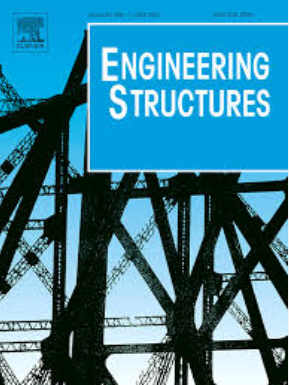Multi-sensor fusion for structural displacement estimation: Integrating vision and acceleration from mobile devices
IF 5.6
1区 工程技术
Q1 ENGINEERING, CIVIL
引用次数: 0
Abstract
Structural displacement is a significant indicator for assessing structural safety conditions. Vision-based measurement methods offer a promising approach for non-contact structural displacement monitoring with substantial potential for practical applications. However, their accuracy is sensitive to lighting conditions and camera motion, which poses challenges for application in long-term structural health monitoring. In this study, a novel data fusion-based approach utilizing mobile phones for structural displacement measurement was proposed. In this method, the built-in sensors of mobile phones were employed to simultaneously capture structural vibration videos and corresponding acceleration data. A deep learning-based dense optical flow model was employed to estimate the full-field optical flow from the video, from which the structural motion is extracted. The rotation and translation of camera were inferred from the dense background motion using a least squares approach. Automatic unit conversion for visual measurements was then accomplished through variance-based fitting, and the measurement results were further refined by fusing the visual data with acceleration measurements via a Kalman filter, leading to accurate displacement estimation. The performance of this method was validated through inter-story displacement measurement within the structure and displacement measurement from outside the structure conducted in varying lighting conditions. The results indicate that the proposed method can achieve accurate displacement estimation across different lighting environments using mobile devices, with root mean square errors of fewer than 0.5 pixels. The proposed approach offers a low-cost and easily accessible solution for structural displacement measurement.
求助全文
约1分钟内获得全文
求助全文
来源期刊

Engineering Structures
工程技术-工程:土木
CiteScore
10.20
自引率
14.50%
发文量
1385
审稿时长
67 days
期刊介绍:
Engineering Structures provides a forum for a broad blend of scientific and technical papers to reflect the evolving needs of the structural engineering and structural mechanics communities. Particularly welcome are contributions dealing with applications of structural engineering and mechanics principles in all areas of technology. The journal aspires to a broad and integrated coverage of the effects of dynamic loadings and of the modelling techniques whereby the structural response to these loadings may be computed.
The scope of Engineering Structures encompasses, but is not restricted to, the following areas: infrastructure engineering; earthquake engineering; structure-fluid-soil interaction; wind engineering; fire engineering; blast engineering; structural reliability/stability; life assessment/integrity; structural health monitoring; multi-hazard engineering; structural dynamics; optimization; expert systems; experimental modelling; performance-based design; multiscale analysis; value engineering.
Topics of interest include: tall buildings; innovative structures; environmentally responsive structures; bridges; stadiums; commercial and public buildings; transmission towers; television and telecommunication masts; foldable structures; cooling towers; plates and shells; suspension structures; protective structures; smart structures; nuclear reactors; dams; pressure vessels; pipelines; tunnels.
Engineering Structures also publishes review articles, short communications and discussions, book reviews, and a diary on international events related to any aspect of structural engineering.
 求助内容:
求助内容: 应助结果提醒方式:
应助结果提醒方式:


